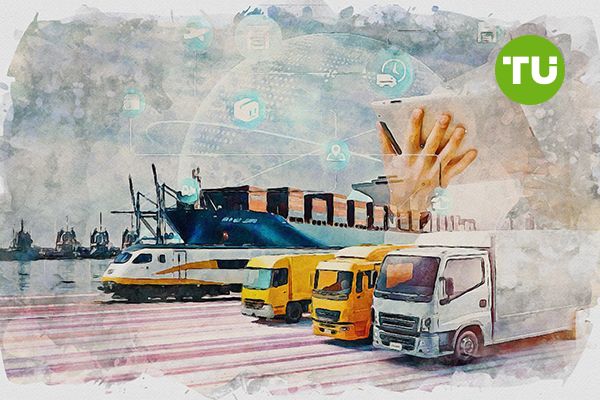Bitcoin and logistics: Can cryptocurrencies speed up supply chains?
 When will cryptocurrencies be integrated into the logistics sector?
When will cryptocurrencies be integrated into the logistics sector?
The use of cryptocurrencies in logistics has been a topic of discussion for several years. However, all implementations in this field have been primarily related to blockchain technology. A new initiative from the Panamanian authorities could take this discussion to a whole new level.
The Panama Canal is exploring the possibility of accelerating vessel transit in exchange for Bitcoin payments. This proposal was put forward by Panama City’s Mayor Mayer Mizrachi on May 29 at the Bitcoin 2025 conference in Las Vegas. According to the initiative, cargo ships would be able to bypass the queue by paying the canal fee in cryptocurrency.
Loading...
According to the mayor, this innovation could not only modernize the Panama Canal but also serve as an incentive for early adopters of the world’s leading digital asset. At this stage, the idea is still under discussion, as integrating it into the canal’s operations is no simple task—especially considering the long-standing and complex logistics processes in place. To better understand how such a system could work, it’s important to first explain what the Panama Canal is and how it operates.
How the Panama Canal works
Construction of the Panama Canal began in 1904, and it officially opened on August 15, 1914. It is a unique engineering marvel and a critical element of global logistics infrastructure, connecting the Atlantic and Pacific Oceans through the narrow strip of Panama. Spanning approximately 80 kilometers, the canal plays a key role in global trade by allowing ships to drastically shorten their route between the Eastern and Western Hemispheres, avoiding the lengthy and treacherous journey around South America.
The Panama Canal operates through a system of locks that raise or lower ships to the necessary height relative to sea level, compensating for the difference in ocean levels and inland water bodies. This system enables more efficient management of vessel movement, accelerates cargo handling, and reduces transportation costs.
Loading...
Currently, the canal operates on a "first come, first served" basis—ships are serviced in the order they arrive. Changing this system would require approval from the Panama Canal Authority and local government.
Last year alone, the Panama Canal generated around $5 billion in revenue and processed 10,000 vessels. Integrating Bitcoin payments into this system would require a mechanism for managing price volatility and instant conversion of BTC into dollars, as Bitcoin’s value can fluctuate significantly.
This naturally raises the question: are there any logistics companies that have already started using cryptocurrency in their operations?
Which logistics companies use cryptocurrency?
So far, there have been relatively few successful cases of integrating cryptocurrencies into logistics operations. One of the pioneers in this sector was an Australian company.
In 2013, Tomcar Australia announced a partnership with CoinJar, enabling its customers to purchase vehicles, spare parts, and accessories with Bitcoin. This initiative wasn’t just about accepting BTC payments—it also extended to paying international suppliers, reducing currency conversion costs, and streamlining payment processes.
Tomcar was one of the first to demonstrate how new technologies can simplify logistics and global trade. Later, other logistics companies began integrating digital payments into their operations.
Loading...
In 2021, TruckPay, a specialized logistics and payments management platform, introduced a new service—support for cryptocurrency payments. The company began accepting not only Bitcoin but also Ethereum and Stellar.
"I understand how cryptocurrencies can be used to support some of our drivers and contractors who do not have access to banks, especially in regions like Latin America and Africa," commented Benjamin Honig, the company’s vice president.
TruckPay’s decision was also influenced by the electric car manufacturer Tesla, which at the time was considering accepting Bitcoin as a payment method.
Blockchain in logistics
However, to be fair, blockchain technology has attracted much more attention from logistics companies than cryptocurrencies themselves. Many industry giants began implementing blockchain solutions in the mid-2010s. One of the pioneers was Maersk, which, in 2018, launched the TradeLens platform in partnership with IBM.
Loading...
This system enabled real-time cargo tracking, automated document processing, and reduced customs clearance and cargo handling costs. TradeLens created a unified ecosystem connecting ports, shippers, customs authorities, and other key players in the global logistics industry.
Maersk’s example inspired other industry veterans. In 2018, DHL, in partnership with Accenture, launched a pilot blockchain project to track pharmaceutical shipments, while FedEx announced its own blockchain initiatives that same year to combat fraud and protect supply chains. UPS also began exploring blockchain applications in logistics in 2018.
The future of cryptocurrencies in logistics
Blockchain certainly offers broad opportunities for logistics, helping to optimize supply chains, increase transparency, and reduce costs. However, despite these achievements, blockchain’s application in logistics remains largely focused on technical infrastructure and process automation, without addressing the broader challenges of financial transactions.
This is where cryptocurrencies come into play, offering the potential to transform not just logistics, but the entire financial model of global trade. Bitcoin and other digital assets have the power to cut the costs of cross-border payments, accelerate settlements between companies, and provide financial access where traditional banks are unavailable.
Industries such as air freight, rail transport, and trucking could be the next to adopt cryptocurrency payments to streamline their operations. While blockchain has already proven itself as a tool for transparency, cryptocurrencies could become the true driver of a financial revolution in global supply chains.













































































































































